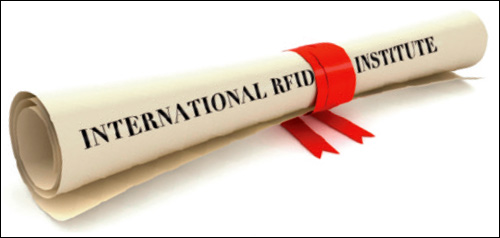On April 15, Motorola Solutions dropped a bombshell on the radio frequency identification industry. The company announced it is selling its enterprise division, which includes bar codes and RFID solutions, to Zebra Technologies, for $3.45 billion (see Zebra Buys Motorola Solutions’ Enterprise Business, Motorola Exits Stage Left and What’s Behind the Motorola Deal). The move instantly made Zebra the most significant player in the market for passive ultrahigh-frequency RFID technologies. But as big as that news was, it probably will not have as significant an impact as an announcement that got much less attention. At RFID Journal LIVE!, in early April, Checkpoint Systems and Mojix announced a global partnership to provide retailers with real-time visibility of store inventory (see Checkpoint Partners With Mojix to Offer Passive RTLS in Stores).
Before I explain why the Checkpoint-Mojix partnership is a potentially major event in the RFID industry, let me discuss the Zebra acquisition. Motorola entered the RFID market in a big way in 2006, when it purchased Symbol Technologies for $3.9 billion (see Motorola Acquiring Symbol). At the time, Motorola said it wanted to bolster its enterprise mobility business offerings, part of the company’s Networks and Enterprise business unit, through which it offered handheld computers and other rugged mobile devices that enable enterprises to extend network connectivity and computing beyond the office environment. Enterprise mobility was Symbol’s core business.
Symbol had purchased an RFID startup called Matrics in 2004, for $230 million (see Symbol Acquires Matrics). RFID was only a small portion of Symbol’s overall revenue at the time Motorola acquired it, but Motorola promoted its passive UHF handheld and fixed readers and quickly established itself as the best-known brand in RFID. Motorola split into two companies in January 2011. The smartphone group became Motorola Mobility and was later purchased by Google (Google is now looking to unload the unit). Motorola incorporated its enterprise business and its radio business, which sells communications systems to first-responders and other government agencies.
While executives in the enterprise group were committed to RFID and believed it would be a huge growth sector, senior executives at the firm apparently grew tired of waiting for RFID to deliver the growth everyone forecast years ago. They decided to sell the unit to Zebra because they wanted to concentrate on their government business. Ironically, Motorola is exiting the RFID business just as adoption is gathering momentum.
For Zebra, the acquisition is a game-changer. Last year, the maker of bar-code label printers and RFID printer-encoders reported $1 billion in sales revenue. Motorola’s enterprise business division, by contrast, reported approximately $2.5 billion in sales revenue. Zebra employs 2,700 workers worldwide; it will now add 4,500 employees from Motorola.
The acquisition more than doubles Zebra’s size, but more important, it makes Zebra a major player in the passive UHF market. Motorola’s handhelds and fixed readers nicely complement Zebra’s line of printer-encoders. Zebra should experience significant growth as RFID adoption accelerates globally. But the acquisition doesn’t guarantee Zebra will dominate the RFID industry. Nor does it advance the adoption of RFID technology.
For RFID adoption to cross the chasm and achieve mass adoption, there needs to be a company or several companies that provide a complete solution. Zebra will offer hardware and some software acquired with the purchase of Motorola’s enterprise division. But it doesn’t have a complete solution for any single industry.
The Checkpoint-Mojix partnership is significant because the two companies can go to market with a complete solution for retailers. In 2008, Mojix introduced the first overhead RFID reader system designed to track items in large areas from great distances. That year, Checkpoint, a company that provided mainly electronic article surveillance (EAS) technology to reduce shrink in retail stores, purchased OATSystems for an undisclosed sum. OAT was a leading provider of enterprise software that could manage RFID data.
The OAT Foundation Suite was designed to help retailers manage inventory based on the RFID data they collect, and to let them set up and enact business rules based on that information. The suite includes Mobile Asset Tracking and Electronic Proof of Delivery, which can be used in distribution centers to track the receipt or shipment of pallets and cases of goods. The OATSystems product can, for instance, automatically trigger an advance shipping notice—or, in the event a shipment is late, it can trigger alerts informing the retailer of the delivery delays.

Checkpoint has transitioned from a provider of EAS systems to a company that provides RFID-based visibility solutions for retailers. It won a major deal to outfit Kohl’s department stores with RFID technology (see Kohl’s Rolls Out RFID for Select Product Categories at Its Stores). Checkpoint has developed its own overhead RFID reader, based on technology acquired from a startup called Wirama, but that reader is designed mainly for theft prevention at exits. By partnering with Mojix, Checkpoint has positioned itself to offer retailers a complete solution: hardware, software and deployment services. This is important because technology buyers generally do not want to buy readers from one company and software from another, and hire yet another firm to put the system together (tags are largely reliable and are readily available from any number of sources).
It’s not clear whether the market will embrace the complete Checkpoint-Mojix solution, but if it does, and the partnership leads to a succession of contracts with major retailers, the two companies could emerge as the go-to companies for retail solutions—the “gorilla,” in the parlance of Geoffrey Moore, author of Crossing the Chasm and other books on technology adoption. Once a gorilla emerges, the market will quickly reach critical mass, as retailers follow the crowd and deploy the gorilla’s solution.
Even if the Checkpoint-Mojix partnership does not have a series of quick wins among retailers, the partnership will put pressure on other hardware and software companies to join forces to offer competing solutions. That’s good for retailers, because complete solutions reduce deployment risk.
The whole product is one of the last pieces of the puzzle required to achieve mass adoption of RFID in the retail sector. The Checkpoint-Mojix partnership moves that market a step closer. When one solution emerges as the winner, adoption will take off.


